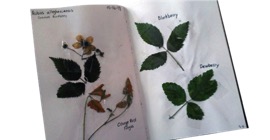This piece was submitted by Lauren McDaniel, a grad student in Wash U’s Landscape Architecture program. She interned at LREC this past summer and continues to serve as a horticulture volunteer.
Biodiversity, vibrant colors, smiling faces, these are just a few words that can sum up Litzsinger Road Ecology Center and why I continue to volunteer on this unique plot of land surrounded by urban infrastructure. What started as an endeavor three years ago to understand natural ecosystems and native plants has grown into a life-long love, and perhaps obsession, with learning everything about native Missouri plants.
Internship

My knowledge of native plants has evolved over the last three years of volunteering, and most recently interning at LREC. I honestly do not think I have ever sweated so much in my life until I interned at LREC last summer. My co-intern Amy and I were always on the move. You could often find us watering new plantings or shoveling mulch when we were not in the woods or prairie identifying plants and trees.
We were given the opportunity to research a subject of our own interest, I chose vertical gardening whereas my partner chose dendrochronology. My handmade vertical gardens were planted with shallow-rooted native plants and were extremely successful. [Read Lauren’s research study Green Walls Utilizing Native Missouri Plants.]

Native Plant ID
From seed cleaning, to transplanting, to planting, and identification, it has truly been a well-rounded experience. Weekly phenology walks challenged us as we sometimes struggled to identify a plant, but it was extremely rewarding to hunt down the proper name and finally have an ID for a plant we commonly encounter but do not see.

In my pursuit for plant knowledge during my internship I was inspired to start a journal herbarium, where I took clippings of flowers and leaves of plants and taped them into a book, providing name and date collected for each plant. This journal herbarium proved useful as a reference for the rest of the summer, often referred to during phenology walks.
Wandering around the blazing prairies however, was not the only useful tool for learning plants. Simply transplanting and organizing plants-in-progress was instrumental in learning IDs. From this exercise, often done multiple times a week during the summer as the plants outgrew their pots, I learned how to ID plants from their seedling form, instead of just by their flower.
Animal Encounters

Beyond the plant aspect of LREC there is so much biodiversity to appreciate. Frequent visits from skinks, turtles, turkeys, deer, the occasional hawk, and groundhogs were to be expected daily. Occasionally the critters would get up-close and personal with us. I will never forget rescuing a skink from our office and him being so grateful that he bit me multiple times (luckily, he didn’t have teeth!). Nor will I forget the days the groundhogs got brave and visited the patio, and then one day we learned groundhogs are like cats and can jump from impressive heights and climb trees! We got to watch baby turkeys grow up from fuzzy little babies to awkward dinosaurs.
The Humans
The plants and animals were special, but the people are what really makes LREC such a special place. The staff and volunteers are so friendly, so knowledgeable, and so eager to teach and learn that it made the heat this summer more bearable. There is a sense of community and belonging that is found sitting around the table in the Glass House. Often, I am the youngest person in the room, but that is totally okay because there is so much we can teach each other as volunteers and friends.
My experience at LREC is something I will always cherish. I think we need more LRECs in the world. It is so important that people young and old feel a connection to the landscape around them in this era of uncertainty. I firmly believe if people feel a connection to the environment around them, they are more likely to want to take care of it for their benefit or the benefit of future generations.
